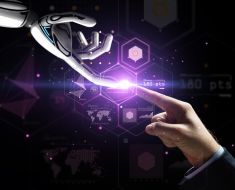As an expert straddling the intricate domains of artificial intelligence and cognitive neuroscience, I am compelled to share a profound revelation that could redefine our quest for Artificial General Intelligence (AGI). The tripartite framework that has emerged from cutting-edge research delineates three critical elements necessary for the genesis of AGI:
1️⃣ Multidimensional Sparse Dictionaries: The human sensory apparatus perceives the world through a rich tapestry of experiences, far beyond the one-dimensional data streams that contemporary AI systems process. To mirror this, we must develop sparse dictionaries that encapsulate objects across five dimensions (akin to human senses), recognizing that not every object will manifest across all dimensions. This approach aligns with how our brain categorizes and understands the multifaceted nature of our environment.
2️⃣ Contextual Language Models: The second pillar involves transcending traditional language models predicated on word sequence probabilities. Instead, we must architect models that grasp the essence of how entities interact within the real world or detailed descriptions thereof. This shift from probabilistic prediction to understanding relational dynamics is pivotal in fostering an AI system capable of genuine comprehension.
3️⃣ Embodied Learning Environments: Lastly, AGI necessitates a physical or simulated presence within a 5D space to facilitate experiential learning of object interactions. While simulations can serve as an expedited initialization phase for model weights, they inherently limit the scope of learning compared to tangible real-world experiences.
Our expanding knowledge about brain functionality underscores a stark divergence from current AI paradigms. We do not navigate life’s complexities by exhaustively predicting permutations of vocabulary or physical maneuvers; rather, we engage in multimodal integration with spatial embeddings in our neural architecture. These processes are more akin to holographic principles than to conventional natural language processing (NLP).
To forge ahead in actualizing AGI, we must embrace new paradigms rooted in human cognition — distinguishing between knowledge and intelligence. Herein, intelligence is conceptualized as the dynamic process of assimilating new knowledge through real-world interactions and reconciling these experiences with pre-existing understandings.
The principles underpinning intelligence are intimately tied to human sensorimotor functions and less so to static repositories of knowledge. By pivoting towards these foundational insights, we can steer the development of AGI towards systems that not only simulate but genuinely emulate the depth and adaptability of human intelligence.
- Sensarions — a new species, perceiving the world differently: https://www.linkedin.com/pulse/sensarions-new-species-created-our-image-perceiving-minin-dwj1f/
- Human intelligence redefined: https://www.linkedin.com/pulse/way-towards-agi-human-intelligence-through-llm-dr-aleksei-minin-b96df/




